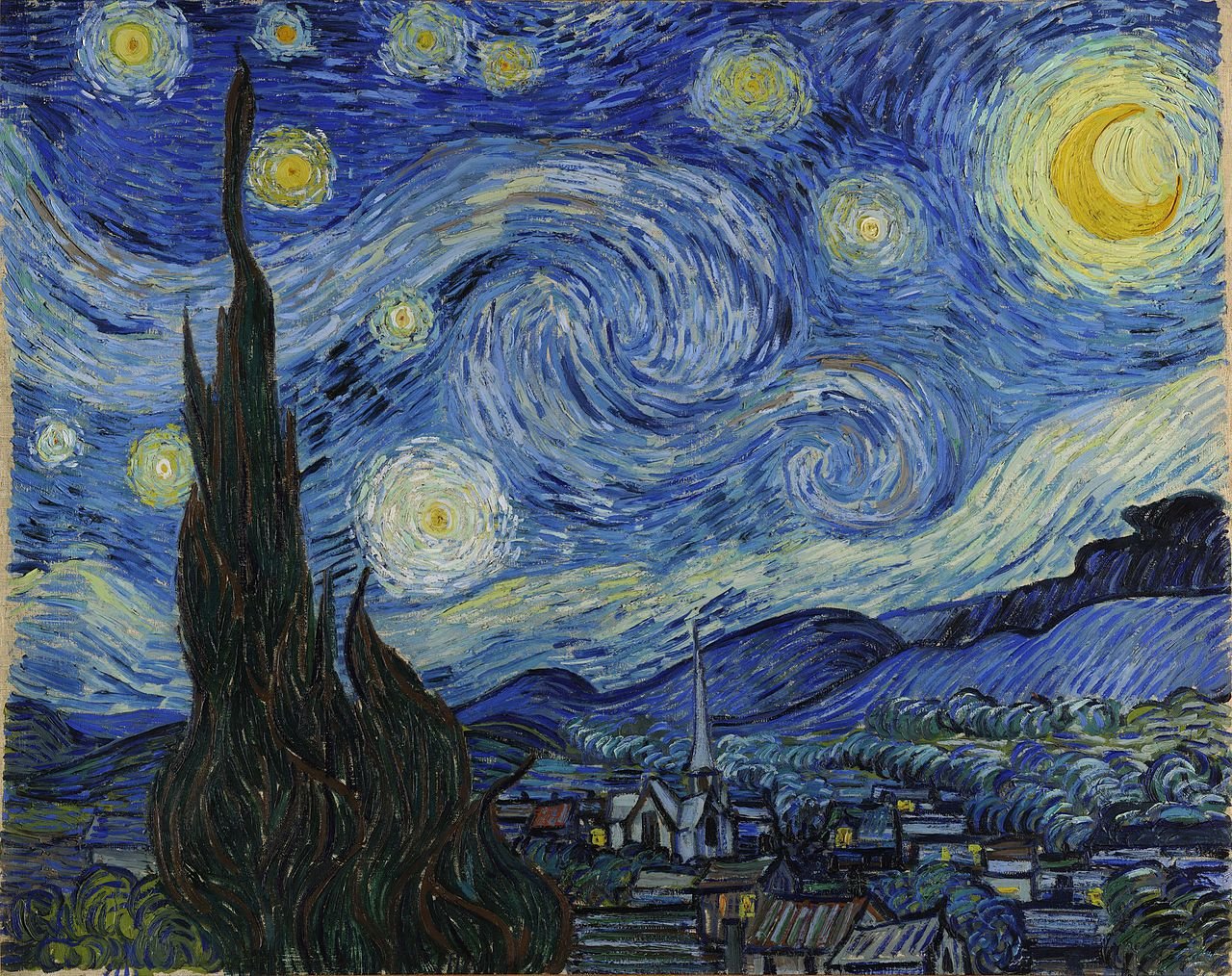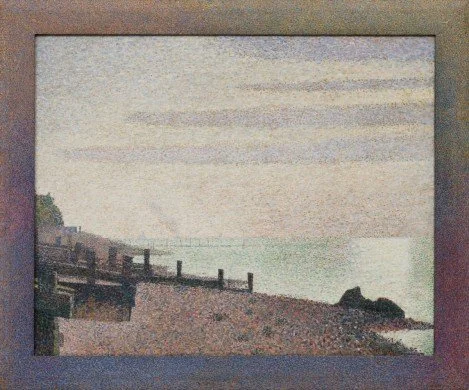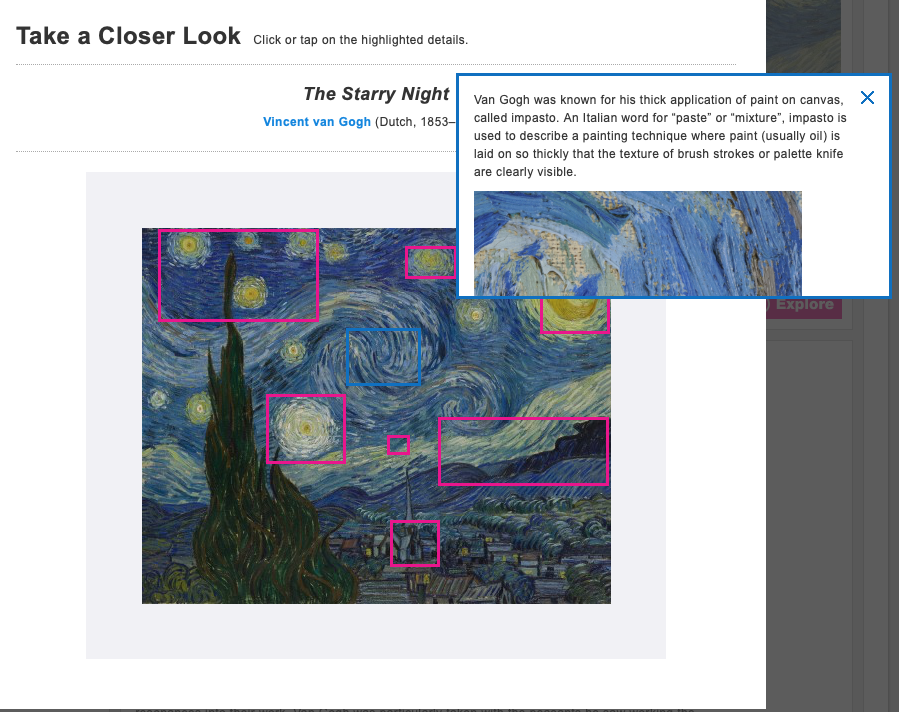
(Van Gogh, 1889)
Modern landscapes learning resource
The ‘Modern Landscapes’ learning resource provided by the Museum of Modern Art (MoMA) is an engaging resource that provides a range of artwork analysis, history, and activities based on the emergence of the modern art period and style (MoMA, 2023). Within this space students can find different modern art styles/processes to research, analyse, and explore to gain new knowledge that they can apply to their own works.
I was drawn to this resource because landscape art and the conventions of abstraction are some of my favourite styles/forms and I believe a resource like this would be a highly engaging starting point for students to explore applied art styles and the historical significance of the art period. The ‘Modern Landscapes’ section of this resource provides a good collection of notorious landscape pieces and gives students the opportunity to delve into the history, materials, styles, and observations of artworks of their choice. This resource should be explored by students with the intent to inspire and inform new ways to approach their art practice.
References:
Van Gogh, V. (1889). Starry Night. [Oil Paint]. Van Gogh Gallery. https://www.vangoghgallery.com/painting/starry-night.html
Seurat, G, P. (1886). Evening, Honfleur. [Oil on Canvas]. Museum of Modern Art (MoMA). https://www.moma.org/learn/moma_learning/georges-pierre-seurat-evening-honfleur-1886/
Dali, S. (1931). The Persistence of Memory. [Oil on Canvas]. WikiArt. https://www.wikiart.org/en/salvador-dali/the-persistence-of-memory-1931
Museum of Modern Art (MoMA). (2023). Modern Landscapes. https://www.moma.org/learn/moma_learning/themes/what-is-modern-art/modern-landscapes/
Australian Curriculum, Assessment and Reporting Authority (ACARA). (2010). Visual Arts F-10 Curriculum. https://www.australiancurriculum.edu.au/f-10-curriculum/the-arts/visual-arts/
This resource’s strength is its layout as well as its extensive amount of information surrounding key artworks, their origins, and the breakdown of materials/styles. You can choose from a list of artworks to explore that will include interesting information on the artist, their life, how they developed their style, and their artistic perspectives of the world. My favourite feature is that the artwork image has hitboxes where you can click and investigate specific features of the work and how/why the artist composed it this way. Within the home page, there’s a range of activities for students that apply to all the artworks, spanning comfortably across both making and responding strands.
Through viewing the Australian Curriculum year 7 and 8 bands, this resource strongly aligns with content descriptor (ACAVAM119), where students work towards “Develop[ing] ways to enhance their intentions as artists through exploration of how artists use materials, techniques, technologies and processes” (ACARA, 2010). The resource supports students in investigating several artists and their representational decisions regarding subject matter and contexts, considering implied meanings of artists and interpreting the symbols and codes that translate across cultures, and researching artworks based on ideological views or movements within art practice (ACARA, 2010). The ‘Modern Landscapes’ resource will support students to become more competent across the curriculum’s general capabilities of critical and creative thinking, intercultural understanding, as well as using Information and communication technology.
For teachers, this resource could be utilised to strengthen inquiry-based pedagogies by encouraging students to drive their own inquiries and delve deeper into their interests in certain artists or art types. Each artist or artwork could be explored within ‘Modern Landscapes’ to focus on a certain learning area across lessons, or the other resource sectors could be utilised as a new study per week that could stretch out into a longer Modern Art inquiry project where students can choose their favourite form and replicate it in their own way.
(Seurat, 1886)
(MoMA, 2023)
(Dali, 1931)




